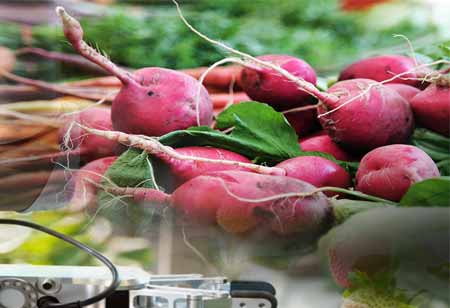Thank you for Subscribing to Food Business Review Weekly Brief
Transforming Food Processing Industry Through Industry 4.0

By
Food Business Review | Thursday, January 06, 2022
Stay ahead of the industry with exclusive feature stories on the top companies, expert insights and the latest news delivered straight to your inbox. Subscribe today.

The Internet of Things (IoT) causes the food processing industry to feel its presence. IoT has started providing food suppliers, processors, and retailers with good financial and operational growth chances in food and beverage businesses with special applications.
FREMONT, CA: Every functional area in the food industry is beneficially affected by IoT integration. For instance, food processing IoT enables food companies to achieve higher traceability, food safety, and accountability throughout the supply chain. The IoT network also reduces risks, costs, and waste.
This "Industry 4.0" transformation transforms the food processing landscape into a more innovative supply chain. Below are some more profound impacts digitalization and IoT have on the food manufacturing industry and its advantages.
Check Out This : Retail Business Review
Improved food safety: By applying IoT in the food processing industry, food disease epidemic risk has drastically decreased. Various sensors use temperature, essential production status, and shipping time.
Especially, real-time temperature tracking sensors enable facilities to remotely monitor food safety data points, ensuring their cold chain supply is managed effectively. The data also empowers the supply chain to collaborate and comply with local and global food safety regulations.
In addition, automated Hazard Analysis and Critical Control Points (HACCP) checklists used throughout production, production, and transportation processes empower companies with important data to implement hour-needed solutions for food safety.
High operational efficiency: IoT platforms endorsed by machine learning algorithms support profitable and sustainable supply chain growth. Such technology and its capacity to digitally analyze gathered data provide valuable insights into predictive maintenance requirements, the performance of equipment, and real-time inventory tracking.
For instance, IoT devices capture and store operating data, identify inefficiencies in the production line, and help identify actionable solutions. These devices' remote connectivity considerably enhances field support, making packaging operations visible. Monitoring equipment remotely can predict problems before they occur, saving time and money.
Logistics: the distribution chain is completely monitored from storage to shipping to sales points or stores through GPS systems and RFID (Radio Frequency Identification) transmitters. RFID tracking gives the food supply chain visibility, automates shipping and delivery, and monitors and controls process temperature.
In addition, it allows companies to track GPS product locations. All data collected helps the company understand customer behavior, respond better to market requirements, and reduce surpluses. IoT technology also simplifies product tracking for companies and consumers, improving supply chain transparency and acquiring customer loyalty and trust.
Waste Reduction: Yearly, a huge amount of human food production is wasted globally. This results in money loss and environmental damage due to growing atmospheric GHC emissions. IoT supports monitoring the state of all food products and sends real-time information to the handler, decreasing food waste.
Production and Storage: Sensors improve quality control, worker activities, and real-time food production analysis. Sensors, such as moisture and protein content, analyze specks and color throughout flour production. This can give real-time production process optimization allowing flexibility to correct any inaccuracies.






